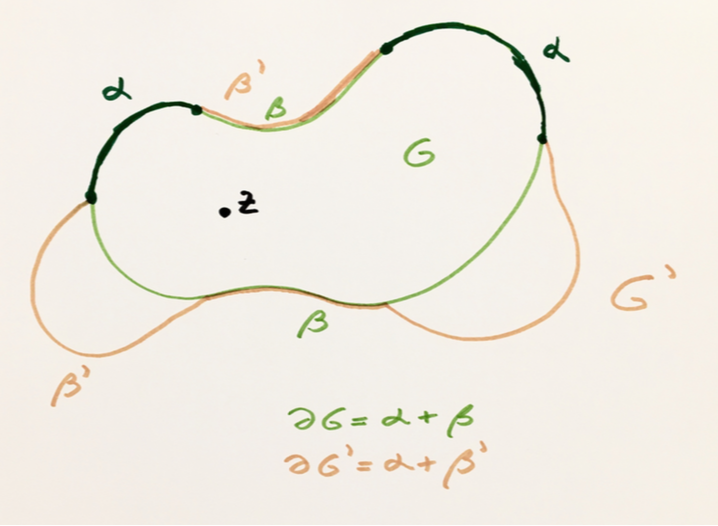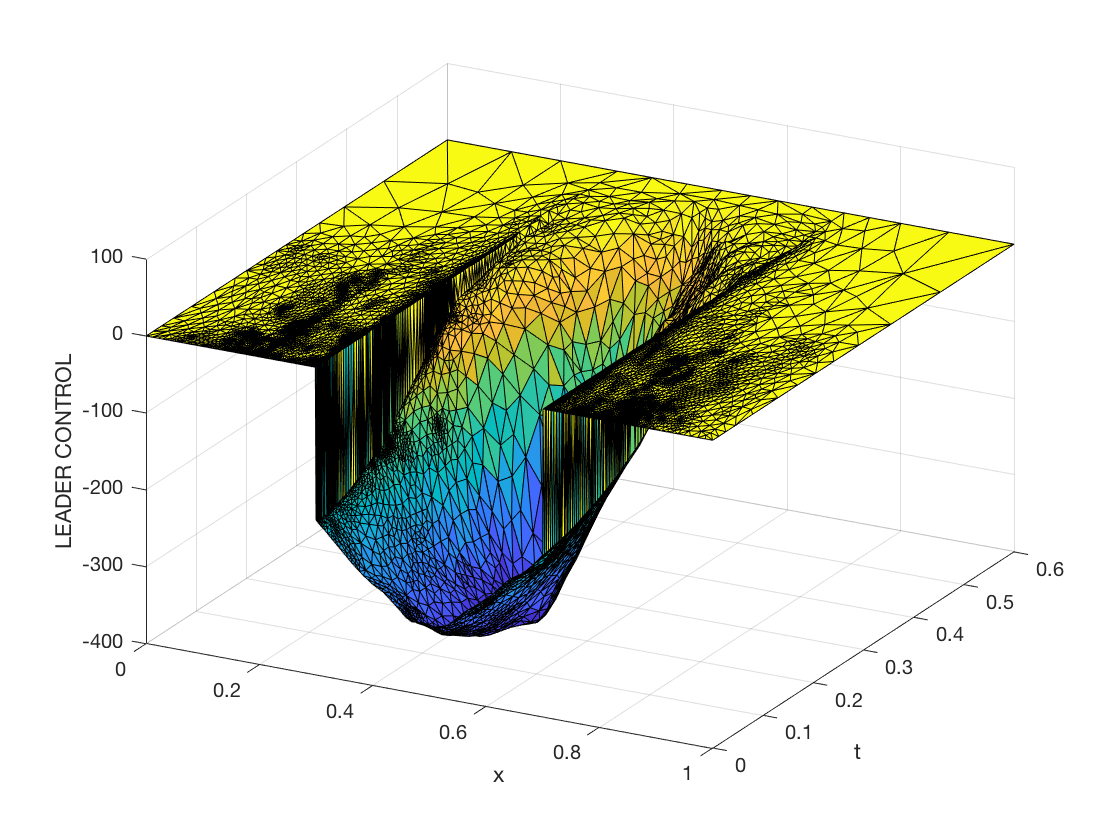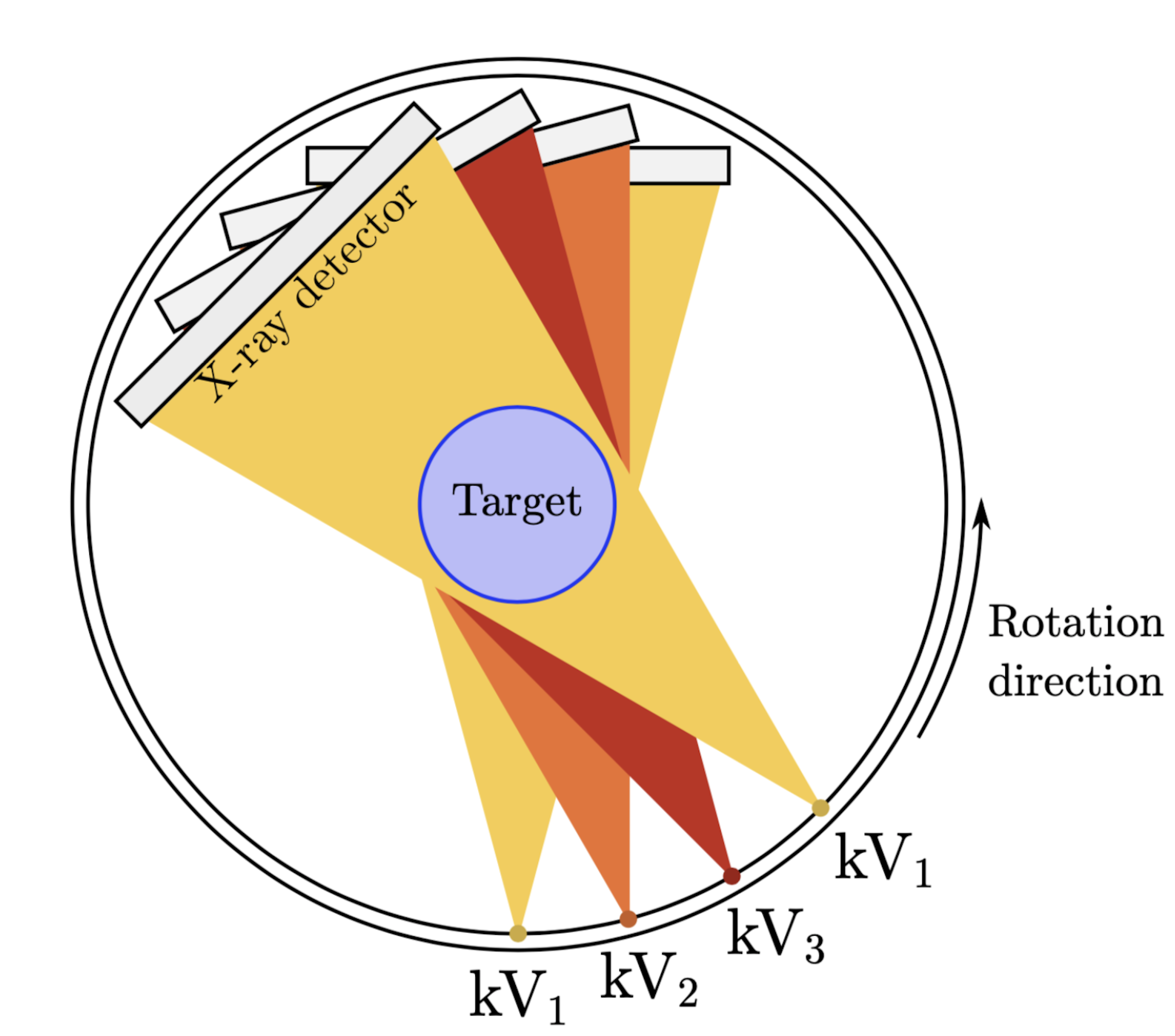Control in Times of Crisis.
Online seminar.






This scientific activity is a continuation of the online seminar Control en Tiempos de Crisis and Control in Times of Crisis 2020 -- 2021, addressing the international community interested in mathematical problems from control of differential equations, inverse problems and related subjects.
The seminar take place each month, on its first Thursday (outside holidays) at 10:00 AM in Mexico / 11:00 AM in Chile / 12:00 PM Brasilia / 5:00 PM in Germany, Italy, Spain, France in the platform Zoom.
The link of each talk will be sent to the mailing list of the seminar. In order to be included in the list, please send a message to one of the organizers.
All talks are / will be available on our youtube channel.| Date | Speaker | Title / Abstract |
|---|---|---|
| October 7 | Mikko Salo (U Jyväskylä, Finland) |
Controlling elliptic PDE, and applications to inverse problems
The classical Runge approximation theorem states that an analytic function in a simply connected domain in the plane can be approximated locally uniformly by global analytic functions. More generally, it was observed by Lax and Malgrange in the 1950s that solutions of an elliptic PDE in a subdomain can be approximated by solutions in a larger domain, provided that a certain form of the unique continuation principle holds. These approximation properties can be used to control the profile and energy of solutions on certain parts of the domain and they have been used in several ways in inverse problems. In this talk we will discuss some recent uses of such control methods, including stability and instability analysis of inverse problems, and the case of fractional equations where the control methods become much more powerful. Slides. youtube link |
| November 18 | Pierre Lissy (U. Paris Dauphine, France) |
Insensitizing controls for the heat equation with respect to boundary variations
In this talk, I will present some recent results obtained in collaboration with Sylvain Ervedoza and Yannick Privat concerning insensitizing controls for the heat equation posed on a bounded domain of R^d. The insensitization problem roughly consists in finding control function, distributed on a subdomain, such that some functional depending on the solution of the heat equation (in our case, the L^2 norm of the solution on another subdomain) is locally insensitive to some perturbation of the equation. Here, the main originalty of our work relies on the fact that the perturbation is the domain itself, in the sense that its boundary can be subject to some small variations. I will present various definitions of the insensitization problem and give some positive and negative results related to them. Slides. youtube link |
| December 9 | Mariano Mateos (U. de Oviedo, Spain) |
Optimal control problems with non-smooth integral constraints in space.
Sparsity is often a desirable property for the solution of least squares problems that may appear, for instance, in image processing or optimal control problems. Two possible techniques to obtain sparse solutions are the following: we can either penalize the functional with an $L^1$-type term or impose an upper bound on the norm of the control variable in $L^1$. There are several examples in the literature about optimal control problems where the usual Tikhonov-regularized tracking type cost functional is penalized, by instance, with the norm of the control variable in $L^1(\Omega)$ --for problems governed by elliptic equations-- or in $L^2(0,T;L^1(\Omega))$ --in the case of problems governed by parabolic equations--. In this talk, we discuss the second technique: we impose an upper bound on the norm of the control variable in $L^1(Omega)$ --for problems governed by elliptic equations-- or in $L^\infty(0,T;L^1(\Omega))$ --in the case of problems governed by parabolic equations--. Notice that this is a quite natural condition: the ``amount of control'' that you can feed into the system at each instant of time is usually limited by technological or economic reasons. On the other hand, the lack of differentiability of the constraint leads to special difficulties in the analysis of the problem that require new techniques of proof. We first prove existence of solution, and obtain necessary first order optimality conditions, from which we deduce the sparsity properties of local solutions. Second order necessary and sufficient optimality conditions with a minimal gap are also obtained. In the second part of the talk, we show the correct way to discretize the problem, so that the discrete solutions still satisfy the sparsity properties, prove convergence and obtain error estimates. Finally, we discuss optimization methods and present several examples. In order to avoid some of the most technical details, we will focus on a problem governed by a semilinear elliptic equation, and will comment on the differences and extra difficulties that appear when the governing equation is parabolic. This presentation is based on a collaboration with E. Casas (U. de Cantabria, Spain) and K. Kunisch (U. Graz, Austria). Slides. youtube link |
| January 13 | Emilia Fridman (Tel Aviv U., Israel) |
Finite-dimensional observer-based control of parabolic PDEs
Finite-dimensional observer-based controller design for PDEs is a challenging problem. In this talk, construction of such controllers via modal decomposition method for parabolic 1D PDEs will be presented. We will start with a linear heat equation, where at least one of the control or observation operators is bounded. We will proceed with the case of both unbounded operators, where dynamic extension is helpful. Here the results for Kuramoto-Sivashinskii and heat equations will be discussed. For both equations we use eigenvalues and eigenfunctions of a Sturm-Liouville operator. The controller design is based on N_0 unstable modes, whereas the observer dimension N is not smaller than N_0. We suggest a direct Lyapunov approach to the closed-loop system, which results in an LMI whose elements depend on N. The value of N and the decay rate are obtained from the LMI. We prove that the LMIs are always feasible for large enough N. Delayed and sampled-data implementations of the controllers and extensions to semilinear PDEs will be discussed. This is joint work with my PhD student Rami Katz. Slides. youtube link |
| February 10 | Ana Leonor Silvestre (Instituto Superior Tecnico, Lisboa) |
Optimal boundary control for drag minimization in a fluid-rigid body interaction
Consider a rigid body ${\mathcal S} \subset {\mathbb R}^3$ immersed in a Navier-Stokes liquid and the motion of the body-fluid interaction system described from a reference frame attached to ${\mathcal S}$. We are interested in the steady motions of this coupled system, where the region occupied by the fluid is the exterior domain $\Omega = {\mathbb R}^3 \setminus {\mathcal S}$. We are interested in the following problem: how to use boundary controls, acting on the whole $\partial\Omega$ or just on a portion $\Gamma$ of $\partial\Omega$, to generate a self-propelled motion of ${\mathcal S}$ with a target velocity $V(x):=\xi+\omega \times x$ and minimize the drag about ${\mathcal S}$. This is joint work with Toshiaki Hishida (Nagoya University, Japan) and Takéo Takahashi (INRIA Nancy-Grand Est, France). Slides. youtube link |
| March 3 | Otared Kavian (U. Versailles, France) |
Remarks on the Cauchy problem for the Laplacian and the Approximate Lagrangian controllability of the Euler Equation.
Abstract. Slides. youtube link |
| April 7 | Jérôme Le Rousseau (U. Sorbonne Paris Nord, France) |
Waves and domain of determinacy for timelike curves.
For a set S of {t=0}, that is, a spacelike set, its domain of determinacy is the largest open set (in space-time) where any wave will vanish if its Cauchy data are zero in a neighborhood of S (in {t=0}). This notion appears rather intuitive by means of so-called influence curves (those are timelike) that one can consider from the complementary of a neighborhood S in {t=0}. One can also consider deformations of spacelike hypersurfaces, always remaining non characteristic, to obtain the domain of determinacy by means of Fritz John's unique continuation theorem. Having both points of view available is quite enjoyable. In fact, for general hyperbolic systems such a result is rather recent and is due to Jean-Luc Joly, Guy Métivier and Jeff Rauch (2005). Consider now a timelike curve (t,x(t)) of finite length. The same questions can be raised. If one can deform a hypersurface that is not spacelike and always remaining non characteristic then the unique continuation theorem due to Luc Robbiano, Daniel Tataru, Luc Robbiano et Claude Zuily (*) allows one to grasp an idea of what the domain of determinacy is for this curve (t,x(t)). In the talk we shall be interested in the following questions: -Can one have a formulation based on timelike curves rather than on hypersurface deformations? -Are both points of view equivalent? -If p and q are the endpoints of our curve (t,x(t)) with q in the future of p, is the intersection of the future of q with the past of p yielding a simple characterization of the domain of determinacy? The talk will be based on ongoing work with Jeff Rauch (University of Michigan). (*) nonexhaustive list of authors. Slides. youtube link |
| May 12 | Manuel González Burgos (U. Sevilla, Spain) |
Boundary control cost for coupled parabolic systems
In this talk we will present new results on the cost of the boundary controllability of coupled parabolic systems at time T > 0. In particular, we will study sharp estimates of the control cost at time T (T small enough) when the eigenvalues of the generator of the $C_0$ semigroup accumulate and do not satisfy a gap condition. In particular, we will apply these results to two coupled parabolic systems with a minimal time of null controllability. Slides. youtube link |
| June 2 | Genni Fragnelli (U. Tuscia, Italy) |
Controllability and stabilization for a degenerate wave equation in non divergence form with drift
Abstract. Talk. youtube link |
| July 12 (TUESDAY) |
Jean Pierre Puel (U. Versailles, France) |
From distributed controllability to boundary controllability.
I consider a controllability system where the control acts in an $\epsilon$-neighborhood $\omega_{\epsilon}$ of a part $\Gamma_{0}$ of the boundary. We study the "convergence" of this problem when $\epsilon$ tends to $0$. I will recall the case of the wave equation which was treated by Caroline Fabre and myself. Then, I will present the results for the heat equation which is a work in collaboration with Felipe W. Chaves and Mauricio C. Santos. The limit is a boundary controllability problem. The difficulties are first of all to obtain a sharp estimate of the observability constant and then a passage to the limit where the homogeneous Dirichlet condition is lost for a problem with a right hand side which becomes singular. ot satisfy a gap condition. In particular, we will apply these results to two coupled parabolic systems with a minimal time of null controllability. |